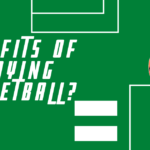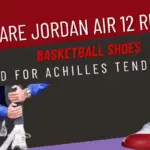Playing basketball can cause lower back pain if players are not careful. Lower back pain is a common problem for basketball players due to jumping, running, and twisting motions during play. Basketball players must take precautions to prevent injury by warming up properly before playing, wearing the right shoes and protective gear, and being aware of their body’s limits.
Can I play basketball with lower back pain? Playing basketball with lower back pain is not recommended, as it can exacerbate the injury and lead to further discomfort. Rest and proper medical advice are crucial for recovery.
Why Does My Lower Back Hurt After Basketball?
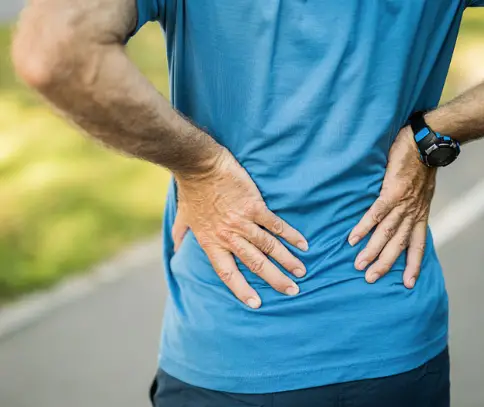
The intense physical activity of playing basketball requires bending, jumping, twisting, and turning, which can strain your lower back muscles, leading to acute or chronic injuries. Additionally, poor posture during activities like dribbling or shooting may cause further damage to your spine, resulting in pain.
Lower back pain after playing basketball? Lower back pain caused by playing basketball may be due to an underlying condition such as a herniated disc or spinal stenosis, leading to more serious long-term consequences if not treated appropriately.
What Are Common Lower Back Injuries From Basketball?
Sprains And Strains:
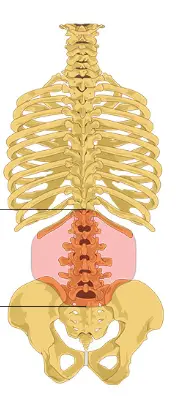
Lower back sprains and strains are two of the most common injuries in basketball players. Strains occur when a muscle or tendon is stretched beyond its limits, while sprains typically happen when ligaments between bones become overstretched or torn. Both conditions can be painful and limit movement; however, they usually heal with proper rest and physical therapy.
Spondylolysis:
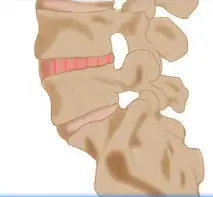
Spondylolysis is an injury to the lower back that can affect basketball players. This condition occurs when a stress fracture develops in the spine’s vertebral bones and causes pain in the lower back. Spondylolysis is one of the more common injuries suffered by basketball players due to repetitive bending, twisting, and jumping motions associated with this sport.
Basketball players may experience tightness or stiffness in their back muscles; however, this may not always be present as some athletes may develop spondylolysis without noticeable symptoms.
Spondylolisthesis
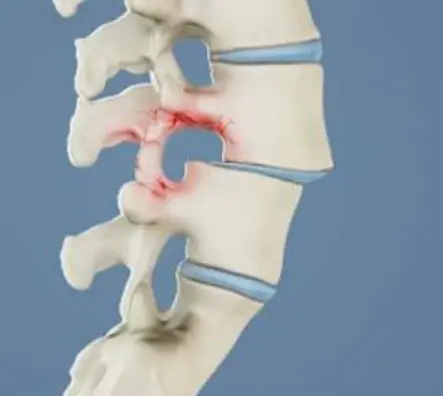
Spondylolisthesis is a medical condition in which one vertebra in the spine slips forward over another. It can cause lower back pain and discomfort, making it difficult to play basketball or engage in other activities. People who experience spondylolisthesis may also have difficulty walking or standing for long periods due to the pain and instability of their spine.
Playing basketball could cause or worsen spondylolisthesis, as physical exertion puts more strain on the back muscles and vertebrae. Basketball players should be aware of any signs that they are developing the condition, such as numbness or tingling in the legs, a sharp stabbing sensation in the lower back, difficulty bending over at times, and sciatica. :
Herniated Disc:
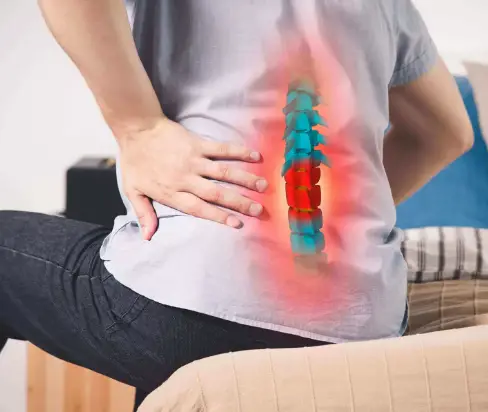
LA herniated disc occurs when the soft part of the intervertebral disc pushes out through its outer casing, leading to localized pain in the lower back and leg. When this happens, it can be difficult for athletes to continue playing sports and engaging in other activities that require physical exertion.
Playing basketball may be one possible cause of lower back pain due to herniated discs. The repetitive jumping and turning can put pressure on the spine, leading to a slipped or bulging disc over time.
How To Prevent Back Pain While Playing Basketball?
Engage In Endurance Training
Endurance training helps strengthen the muscles around the spine, which support the body during physical activity. This ensures that when playing basketball, the spine is more protected from any potential injuries or pain caused by jumping and landing.
Endurance training should include exercises such as planks and crunches that target core muscles and the abdomen. These exercises must be done regularly to keep the back strong enough to handle any sudden changes in movement or pressure during basketball games or practice sessions.
Seek Physiotherapy
Physiotherapists are trained professionals who specialize in treating injuries and medical conditions related to the musculoskeletal system. They can create an individualized treatment plan to help reduce or eliminate your lower back pain from basketball-related activities by assessing your specific needs. This may include massage therapy, guided exercises, stretches, or specialized equipment such as foam rollers or heat pads for additional support and comfort.
Stretch Enough During Warm-Ups
Lower back pain after playing basketball is not usually caused by the sport itself but rather by an incorrect posture or lack of proper stretching before the game. Stretching helps loosen tight muscles and reduces strain while used more intensely during the game. Additionally, it increases blood flow throughout your body, which helps improve flexibility and agility.
Prayer Stretch:
This yoga pose has been found to alleviate chronic lower back pain, making it an excellent option for those who experience aches and pains after playing basketball. It focuses on stretching the hips, spine, and legs while calming the nervous system. It works by counteracting common postural imbalances caused by sports like basketball, including tight hamstrings and hip flexors and weak abdominals and low back muscles.
InfoGraphics:
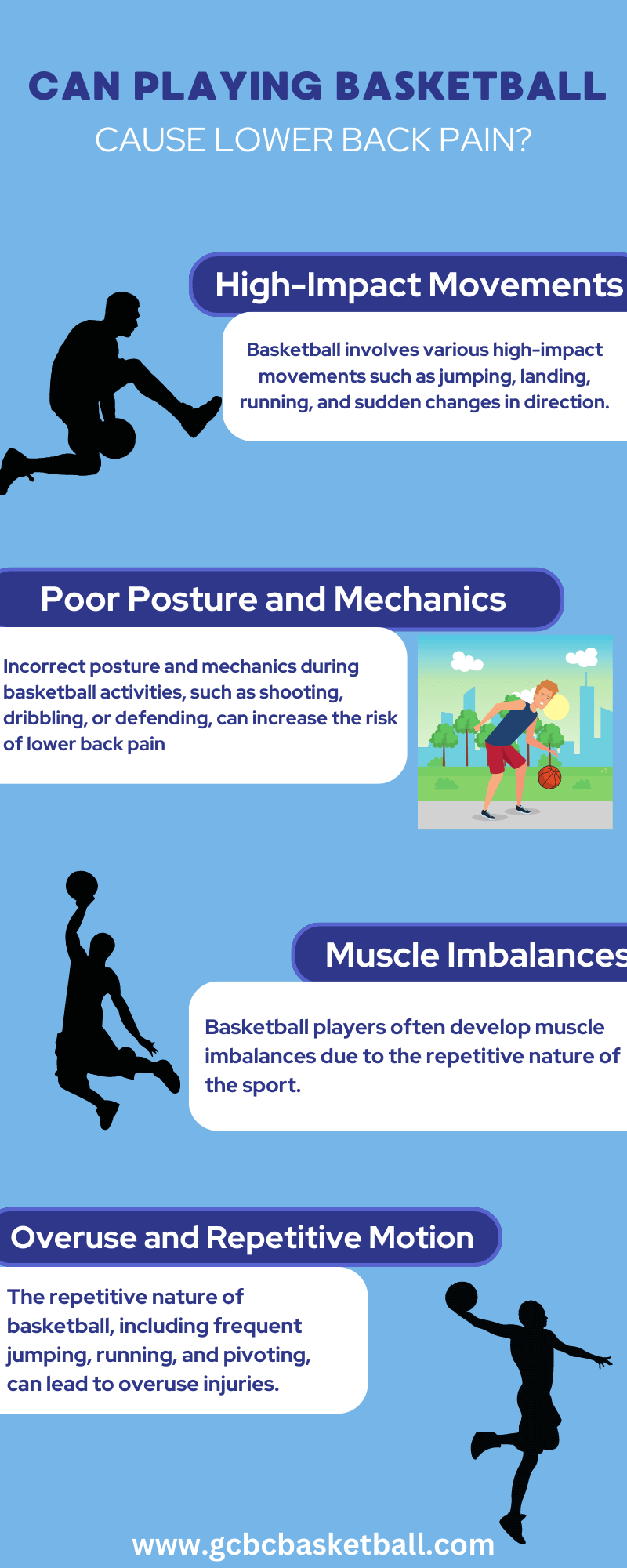
Conclusion:
Playing basketball can cause lower back pain in a variety of ways. When playing, it is essential to adopt proper form and technique to reduce the risk of injury. It is also essential to warm up properly before engaging in physical activity and take regular breaks during practice. If pain develops, it’s best to stop playing and seek medical advice for further evaluation. With the right approach and preventative measures, basketball players can enjoy the sport without experiencing chronic lower back pain.

Clyde Jackson III is a basketball coach and the founder of GCBC Basketball, a basketball-related learning and informational website that focuses on helping young players develop their skills on and off the court. With over 15 years of coaching experience, Clyde has worked with players of all ages and skill levels, from beginners to professionals.



